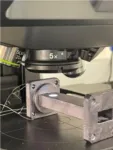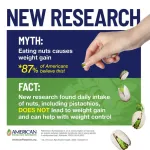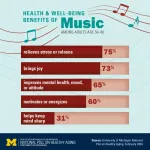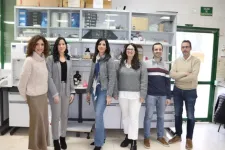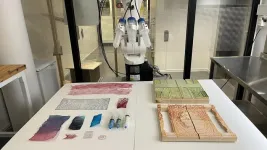(Press-News.org) One of the most important components of satellites that enable telecommunication is the waveguide, which is a metal tube for guiding radio waves. It is also one of the heaviest payloads satellites carry into orbit. As with all space technology, reducing weight means reducing the amount of expensive and greenhouse gas-producing fuel it takes to launch a rocket, or increasing the number of devices carried by the same rocket to space. Researchers from Drexel University and the University of British Columbia are trying to lighten the load by creating and testing a waveguide made from 3D-printed polymers coated with a conductive nanomaterial called MXene.
In their paper recently published in the journal Materials Today, the group reported on the potential of using MXene coatings to impart lightweight nonconductive components with electrical conductivity — a property sacrificed in additive manufacturing using polymer materials, such as plastics.
“In spaceflight applications, every extra gram of weight counts,” said Yury Gogotsi, PhD, Distinguished University and Bach Professor in Drexel’s College of Engineering, who is a leader in MXene research. “MXene materials provide one of the thinnest possible coatings — their flakes have a thickness of a few atoms — that can create a conductive surface, so we see great potential in using MXenes to treat additive manufactured components made of polymers that have complex shapes.”
Waveguides function as pipelines for microwaves. They direct the waves to receivers while preserving the power of the signal. In a microwave oven, waveguides ensure heating of the food; on a satellite, they transfer high-quality signals between different objects within and between satellites, as well as between satellites and Earth.
And, like the intricate network of pipes winding their way through a home, waveguides are designed in a range of shapes to fit into confined spaces. They can range from simple, straight channels to structures as complex as a labyrinth.
"Waveguides can be as basic as a straight, rectangular channel or they can morph into shapes resembling a 'crazy straw,' with bends and twists," said Mohammad Zarifi, an associate professor, who studies microwave communication at the University of British Columbia and led the team’s electrical engineering and design efforts. “The real game-changer, however, is the advent of additive manufacturing methods, which allow for more complex designs that can be difficult to produce with metals.”
While just about any hollow tube could be used as a primitive “waveguide,” the ones that transmit electromagnetic waves — in microwave ovens and telecommunications devices, for example — must be made from a conductive material to preserve the quality of transmission. These waveguides are typically made from metals like silver, brass and copper. In satellites, aluminum is the lighter-weight choice.
The researchers from Drexel, who first discovered MXenes in 2011 and have led their research and development ever since, suggested the 2D nanomaterials would be a good candidate as a coating for the plastic waveguide components based on their previous discoveries that MXenes can block and channel electromagnetic radiation.
“Our MXene coating emerged as a strong candidate for this application because it is highly conductive, functions as an electromagnetic shield and can be produced simply by dipping the waveguide in MXenes dispersed in water,” said Lingyi Bi, a PhD candidate in Gogotsi’s group. “Other metallic paints have been tested, but due to the chemicals used to stabilize their metallic ingredients, their conductivity suffers in comparison to MXenes.”
In addition, the researchers reported that the MXene coating bonded exceptionally well to the 3D-printed nylon waveguides due to compatibility between their chemical structures. The team dip-coated lightweight guides of varying shapes and sizes — straight, bent, twisted and resonator-shaped — to test MXene’s ability to thoroughly cover their interior.
The MXene-coated nylon waveguides weigh about eight times less than the standard aluminum ones currently being used, and the MXene coating added just a tenth of a gram to the overall weight of the components.
Most importantly, the MXene waveguides performed nearly as well as their aluminum counterparts, showing an 81% efficiency in guiding electromagnetic waves between two terminals after just one cycle of dip coating, just a 2.3% drop off from the performance of aluminum. The researchers demonstrated that they could improve this transmission metric by varying layers of coating or the size of MXene flakes — reaching a top transmission efficiency of 95%.
This performance held steady when the transmission was dialed up to the different frequency bands, such as those currently used in low-Earth orbit satellite communications and a sufficiently high input power for these transmissions. It also did not significantly degrade after three months, an indicator of the durability of the coating.
“The MXene-coated waveguides still need to go through extensive testing and be certified for space use before they can be used on satellites,” said Roman Rakhmanov, a doctoral candidate at Drexel who participated in the research. “But this finding could be an important step toward the next generation of space technology.”
Gogotsi’s team plans to continue its exploration of MXene coatings in applications that could benefit from an alternative to metal components.
“These promising results suggest that MXene-coated components could be a viable lightweight replacement for waveguides used in space,” Gogotsi said. “We believe that the coatings could also be optimized for transmissions of varying frequencies and applied to a variety of additive-manufactured or injection-molded polymer components, providing a lightweight and low-cost alternative to metals in a number of terrestrial applications as well.”
END
MXene-coated devices can guide microwaves in space and lighten the payload
Finding is a step toward lightweight replacements for metal components in space technology
2024-02-07
ELSE PRESS RELEASES FROM THIS DATE:
Daily intake of tree nuts, including pistachios, does not lead to weight gain, body fat gain, or changes in energy intake in Millennials
2024-02-07
More than half of Americans do not currently meet the daily recommendation of 5–7 ounce equivalents^ of nuts and seeds per week.1
One possible contributor to such low intakes of tree nuts could be a fear that the calories or fat composition of tree nuts leads to weight gain.
For example, past studies suggest that up to 87% of Americans think eating nuts can lead to weight gain due to their dietary fat content2 despite scientists confirming that eating nuts every day, including pistachios,3 can be an achievable and simple strategy to ...
New method to more accurately spot underground nuclear tests
2024-02-07
A more accurate way of identifying underground nuclear tests, including those conducted in secret, has been developed by researchers at The Australian National University (ANU).
The new method could help international observers better identify tests carried out by countries or actors known to possess nuclear weapons, as well as providing new information about those suspected of being armed.
According to lead author Dr Mark Hoggard, in the aftermath of the Cuban Missile Crisis and Partial Test Ban Treaty in the 1960s, testing of nuclear ...
More than half million dollars in research grants awarded to understand No. 1 birth defect
2024-02-07
DALLAS, Feb. 6, 2024 — Five promising scientific researchers will advance their work to better understand and treat the most common birth defect in the U.S., congenital heart defects (CHDs), thanks to joint financial support from the American Heart Association and The Children’s Heart Foundation's Congenital Heart Defect Research Awards program.
To date, the American Heart Association, celebrating 100 years of lifesaving service and devoted to a world of healthier lives for all, and The Children’s Heart Foundation, dedicated to funding congenital heart defect research, have ...
Rice’s Santiago Segarra wins NSF CAREER Award
2024-02-07
HOUSTON – (Feb. 7, 2024) – Artificial intelligence is good at many tasks involving data in the form of text, audio and images, including face recognition and text summarization.
“AI is an amazing tool and has been extended over less conventional domains, such as climate data defined on spheres (representing the Earth) and traffic data defined on road networks,” said Santiago Segarra, assistant professor of electrical and computer engineering and statistics.
With his five-year, $599,138 CAREER Award from the National Science Foundation, Segarra intends to study the use of graphs to represent these ...
Music may bring health benefits for older adults, poll suggests
2024-02-07
Whether it’s singing in a choir, playing the living room piano, joining in hymns at church, or just whistling along with the radio, a new poll finds that nearly all older adults say music brings them far more than just entertainment.
Three-quarters of people age 50 to 80 say music helps them relieve stress or relax and 65% say it helps their mental health or mood, according to the new results from the University of Michigan National Poll on Healthy Aging. Meanwhile, 60% say they get energized or motivated ...
From waste to resource: A new and sustainable process transforms sewage sludge into activated carbon
2024-02-07
Sewage sludge is the solid waste resulting from wastewater treatment. According to data from the Ministry for the Ecological Transition and the Demographic Challenge, 1.2 million tons of this waste were produced in Spain in 2021 alone, and its management is a growing problem. Although some of it may have agricultural applications, such as being used as fertilizer after composting, its high concentration of metals limits its use, generating environmental problems.
A new study has managed to give this waste a second life, turning it into activated carbon, a product boasting ...
Incheon National University researcher examines proactive change-oriented behaviors by public service providers
2024-02-07
Although change-oriented behaviors are critical to high quality public service delivery, encouraging employees to embrace and pursue change in the public sector is difficult. Even with sufficient job autonomy–the principal antidote to resistance to change in the public sector literature–public servants may still lack the incentives, skills, information, and sense of security necessary to engage in proactive change-oriented behavior. Consequently, while job autonomy is undoubtedly important, it alone is not enough, as demonstrated by the many cases in which autonomy fails to lead to change and work process improvements. Given the importance of attitudes ...
3D printed nanocellulose upscaled for green architectural applications
2024-02-07
For the first time, a hydrogel material made of nanocellulose and algae has been tested as an alternative, greener architectural material. The study, from Chalmers University of Technology in Sweden and the Wallenberg Wood Science Center, shows how the abundant sustainable material can be 3D printed into a wide array of architectural components, using much less energy than conventional construction methods.
The construction industry today consumes 50 percent of the world’s fossil resources, generates 40 percent of global waste and causes 39 percent of global carbon dioxide emissions. There is a growing line of research into biomaterials and their applications, in ...
Inexpensive, carbon-neutral biofuels are finally possible
2024-02-07
When it comes to making fuel from plants, the first step has always been the hardest — breaking down the plant matter. A new study finds that introducing a simple, renewable chemical to the pretreatment step can finally make next-generation biofuel production both cost-effective and carbon neutral.
For biofuels to compete with petroleum, biorefinery operations must be designed to better utilize lignin. Lignin is one of the main components of plant cell walls. It provides plants with greater structural integrity and resiliency from microbial attacks. However, these natural properties of lignin also make it difficult to extract and utilize ...
Will this new solar maximum solve the puzzle of the Sun’s gamma-ray picture?
2024-02-07
The Sun’s polar regions were the most active emitting high energy radiation during the previous solar maximum, an imbalance yet to be explained, and reported for the first time in a study led by a researcher of the Faculty of Sciences of the University of Lisbon (Ciências ULisboa) (Portugal).
The Sun shines brightly in the visible light, but how does it look like at the highest energies of the electromagnetic radiation? The Sun’s picture taken in gamma rays is a deadly sight, luckily blinded by the Earth’s atmosphere and only seen from space. Each photon carries a billion times more energy than its ultraviolet sibling. How does the Sun’s regular gamma rays’ ...
LAST 30 PRESS RELEASES:
Making lighter work of calculating fluid and heat flow
Normalizing blood sugar can halve heart attack risk
Lowering blood sugar cuts heart attack risk in people with prediabetes
Study links genetic variants to risk of blinding eye disease in premature infants
Non-opioid ‘pain sponge’ therapy halts cartilage degeneration and relieves chronic pain
AI can pick up cultural values by mimicking how kids learn
China’s ecological redlines offer fast track to 30 x 30 global conservation goal
Invisible indoor threats: emerging household contaminants and their growing risks to human health
Adding antibody treatment to chemo boosts outcomes for children with rare cancer
Germline pathogenic variants among women without a history of breast cancer
Tanning beds triple melanoma risk, potentially causing broad DNA damage
Unique bond identified as key to viral infection speed
Indoor tanning makes youthful skin much older on a genetic level
Mouse model sheds new light on the causes and potential solutions to human GI problems linked to muscular dystrophy
The Journal of Nuclear Medicine ahead-of-print tip sheet: December 12, 2025
Smarter tools for peering into the microscopic world
Applications open for funding to conduct research in the Kinsey Institute archives
Global measure underestimates the severity of food insecurity
Child survivors of critical illness are missing out on timely follow up care
Risk-based vs annual breast cancer screening / the WISDOM randomized clinical trial
University of Toronto launches Electric Vehicle Innovation Ontario to accelerate advanced EV technologies and build Canada’s innovation advantage
Early relapse predicts poor outcomes in aggressive blood cancer
American College of Lifestyle Medicine applauds two CMS models aligned with lifestyle medicine practice and reimbursement
Clinical trial finds cannabis use not a barrier to quitting nicotine vaping
Supplemental nutrition assistance program policies and food insecurity
Switching immune cells to “night mode” could limit damage after a heart attack, study suggests
URI-based Global RIghts Project report spotlights continued troubling trends in worldwide inhumane treatment
Neutrophils are less aggressive at night, explaining why nighttime heart attacks cause less damage than daytime events
Menopausal hormone therapy may not pose breast cancer risk for women with BRCA mutations
Mobile health tool may improve quality of life for adolescent and young adult breast cancer survivors
[Press-News.org] MXene-coated devices can guide microwaves in space and lighten the payloadFinding is a step toward lightweight replacements for metal components in space technology
